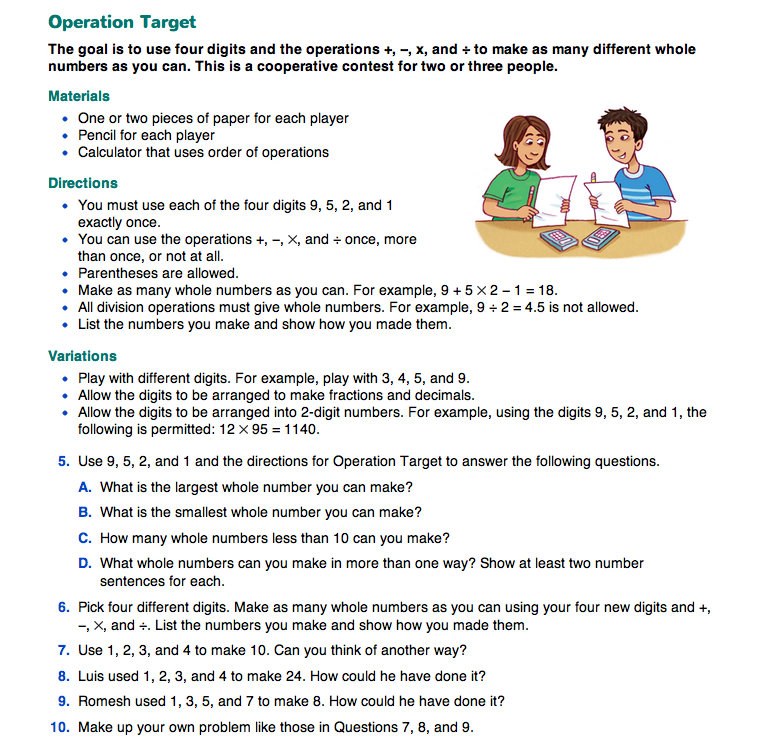Order of Operations
Est. Class Sessions: 2Developing the Lesson
Part 2. Operation Target
The Operation Target game in the Student Guide provides practice with the order of operations. Review the directions with the class. In the game, students use four digits and the arithmetic operations +, –, ×, and ÷ to generate as many different whole numbers as possible. Students can check their computations with a calculator that uses the conventional order of operations.
Quite a few different numbers can be made using 9, 5, 2, and 1. For example:
9 + 5 + 2 + 1 = 17
9 − (5 − 2) − 1 = 5
9 − 5 − 2 − 1 = 1
1 × 2 × 9 × 5 = 90
5 × (2 + 1) + 9 = 24
2 × 5 ÷ 1 + 9 = 19
2 × 1 + 9 × 5 = 47
A restriction to positive whole numbers is explicit in the directions, but may need to be emphasized. Therefore, the smallest number that can be made is 0 (0 = 5 × 2 − 9 − 1). If you allow negative numbers, then the smallest number is 1 − 5 × 2 × 9 = −89. But we suggest not allowing negative numbers at this time. The exclusion of negative numbers applies to their use in the number sentence, e.g., 2 − 5 + 1 + 9. The first operation, 2 − 5, results in a negative number. This should not be allowed.
Another restriction is that the use of 2-digit numbers is not allowed. So, for example, 25 × 91 = 2275 is not allowed. Assign Questions 5–10 after students have had a chance to play the game.












